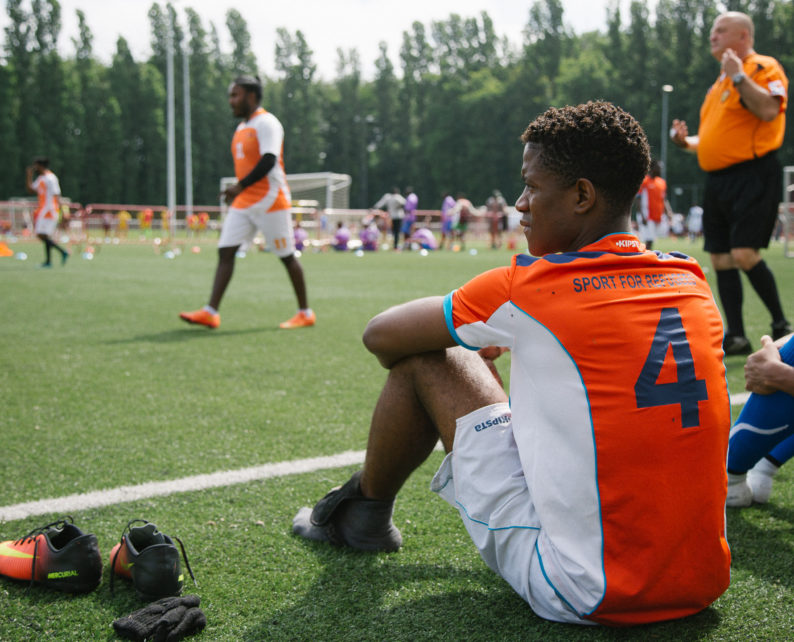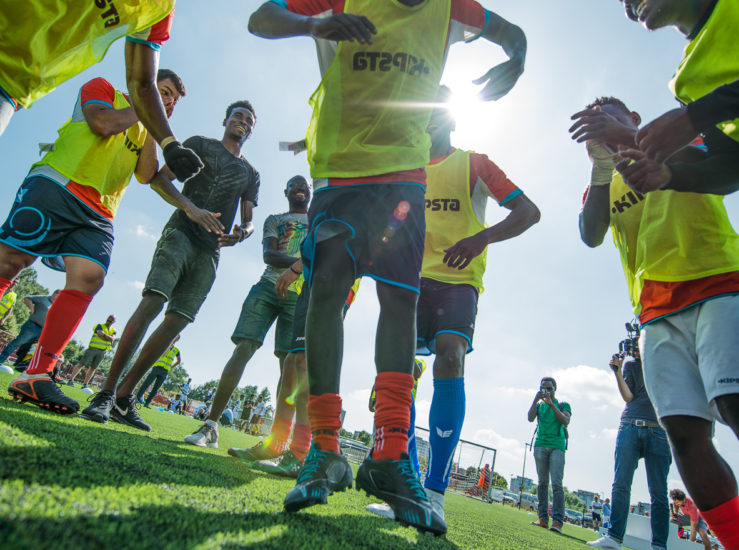Integration
“Integration” into a society is in principle a process we all undergo in our culture of origin, in acquiring the codes and socio-cultural norms and values that make life in society possible. This primary process, undergone early in life and in large parts unconsciously, is generally referred to as “socialisation”.
A later, secondary and conscious process of “integration” into a new and very different host society is a highly complex, stressful, and long process that requires a considerable amount of energy and patience. Working with migrants in a football context usually (but not exclusively) takes place at the very beginning of this process, which is why some activists refer to a “pre-integration” period, a phase which allows newly arrived individuals to benefit from others who are already more advanced.
Some social scientists or NGO activists are not very comfortable with the word “integration”, for historical reasons. The term may indeed be associated to the concept of “assimilation”, which refers to a process where an immigrant fully embraces the norms and values of the host society, losing large parts of his/her culture of origin (some scientists actually prefer the term “acculturation”). While the term “assimilation” as such is perfectly neutral, the concept is today considered not only counter-productive, but also closely linked to colonialist or neo-colonialist ideologies and should therefore better be avoided.
There is, however, a certain consensus today in the understanding that successful “integration” is a two-way process engaging both the newcomers and the host society, implying rights and obligations on both sides, and necessarily having an effect on both sides.
While many refugees or “beneficiaries of international protection” will wish to return to their home country once the situation will have improved, they nevertheless are likely to live for several years in the host society, which makes “integration” efforts on both sides both desirable and inevitable. As Laurent Thieule, President of the Sport and Citizenship think tank, anticipates, “the cost of non-integration will by far exceed the investment of resources required for successful integration”.[1]
[1] At the first transnational project meeting of the FIRE project, Brussels, 14 February 2019.





